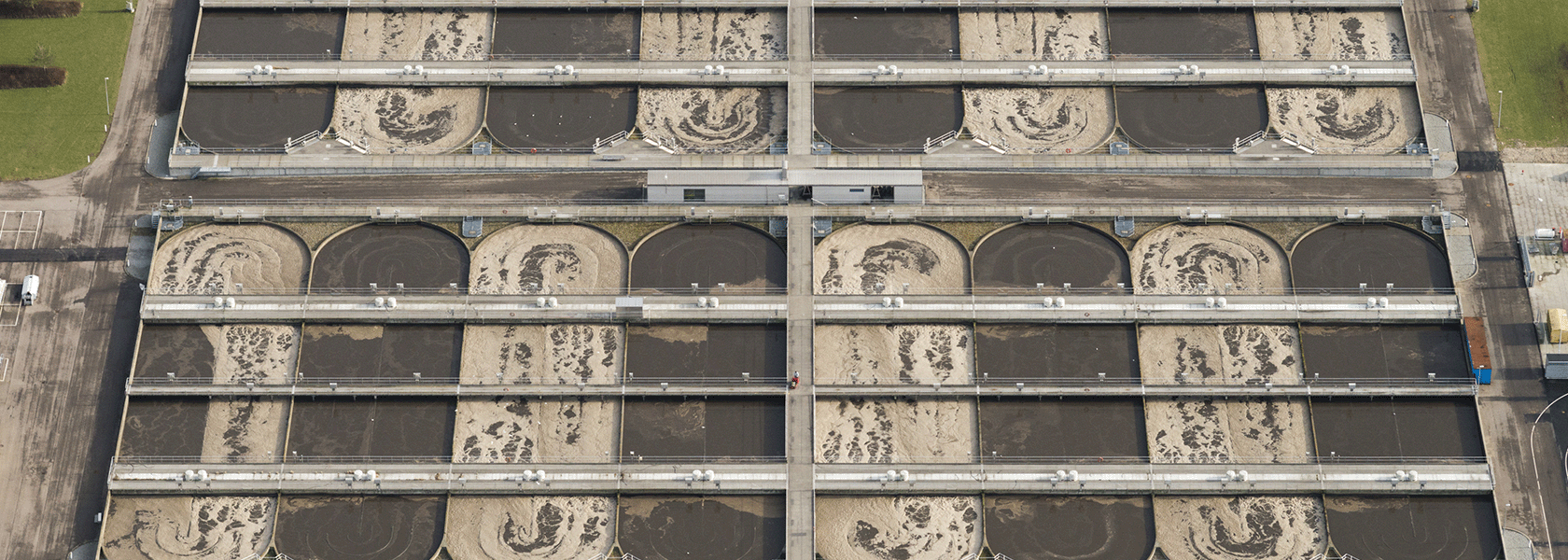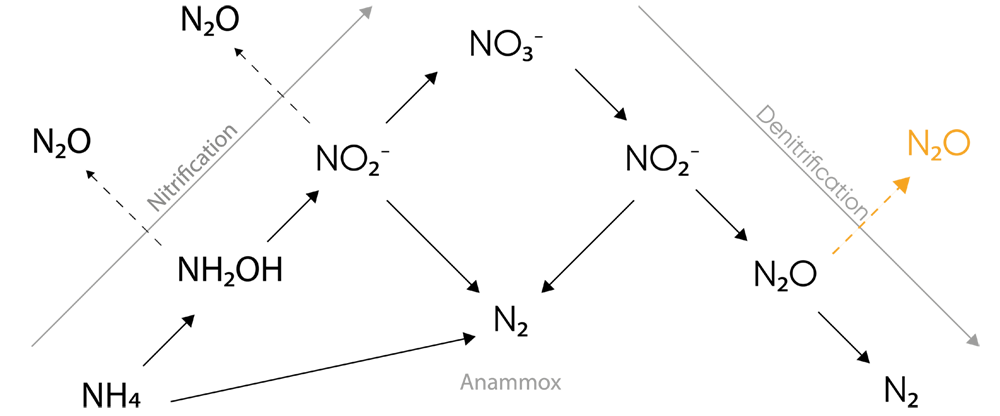

Triggers for N2O Production
What Causes N2O Production?
We are still learning about the exact triggers for N2O production from activated sludge. However, the predominant emission of N2O comes from the aerated nitrification, mainly from the metabolism of NH4 by ammonium oxidizing bacteria.
Especially, the lack of sufficient oxygen during the nitrification process has resulted in high levels of N2O production. Due to the simultaneous aeration, the N2O is stripped into the atmosphere. Generally, sudden perturbations of the bioprocesses, such as changes in dissolved oxygen, NH4+ shock loads, or NO2- spikes, also lead to immediate increases in N2O emissions.
Process Parameters that Promote the Formation and Emission of N2O
- Low oxygen set point or operation conditions, typically below 0.5 mg/L, during nitrification
- Low COD/N ratio for denitrification, typically below 3.5-4
- Shock loading of NH4+, e.g. reject water pulse
- NO2- accumulation during the nitrification, e.g. due to high NH4+ conversion rate
- Oxygen availability during denitrification
- Short sludge age
- Low temperatures
To understand the N2O triggers in your wastewater treatment process, it is important to conduct a measurement campaign of min. 1 year. This will provide a good foundation for mitigating emissions as research has shown that N2O emissions are seasonally variable.

Send a message to Lukas, Bastian, and Martin. They will answer within one workday.
If we are online and available to chat, you can also click the blue icon to the right.

